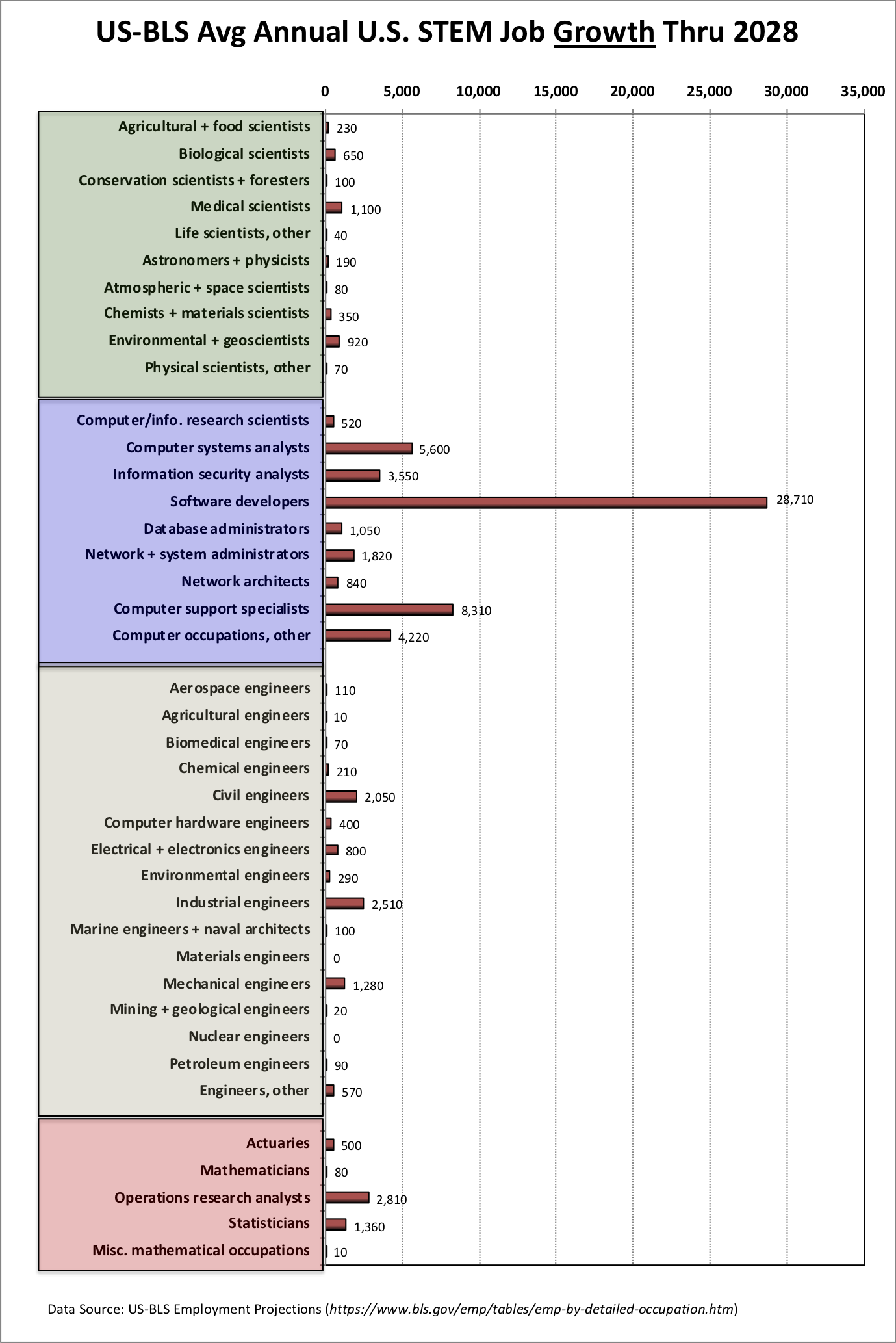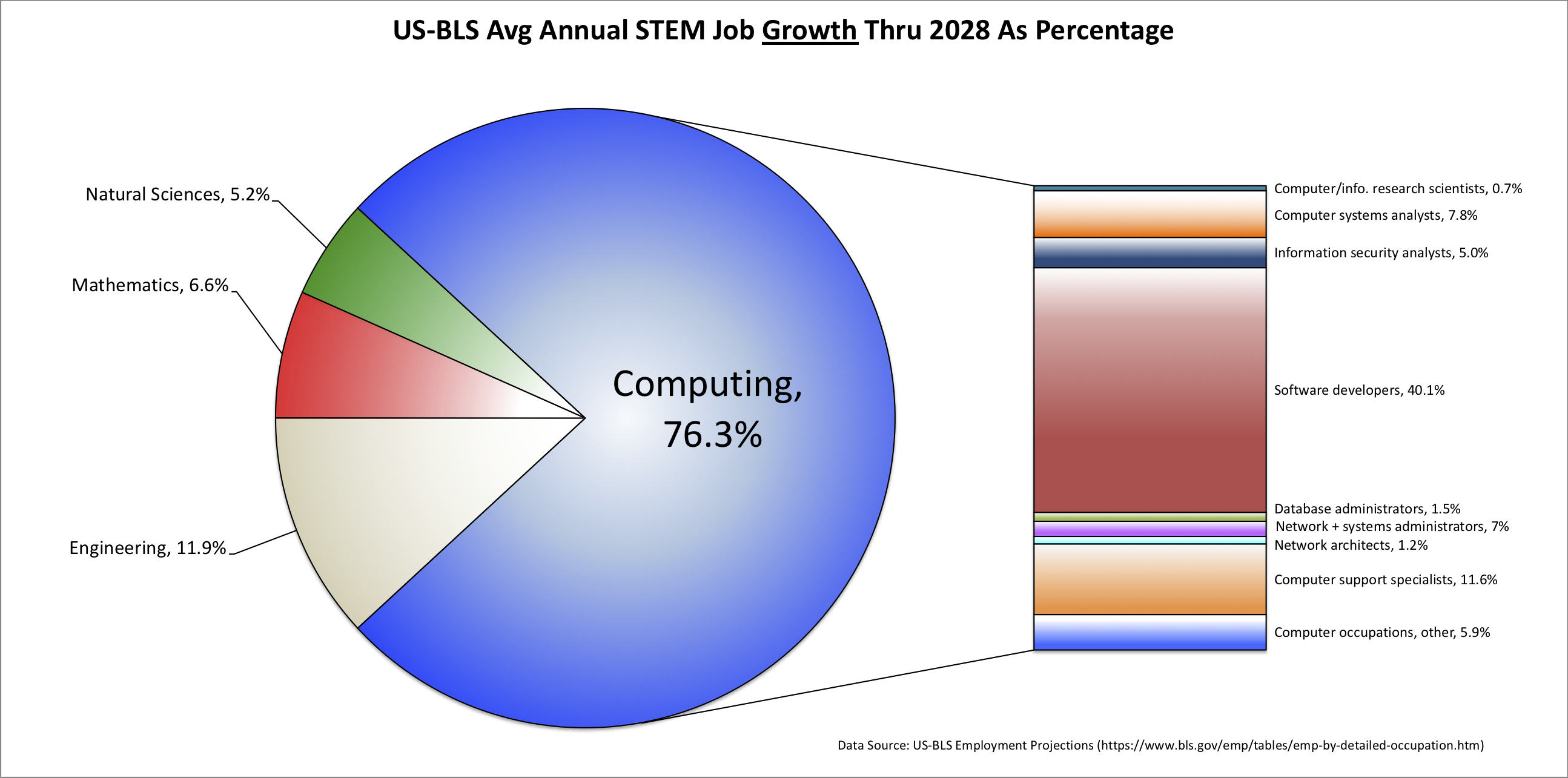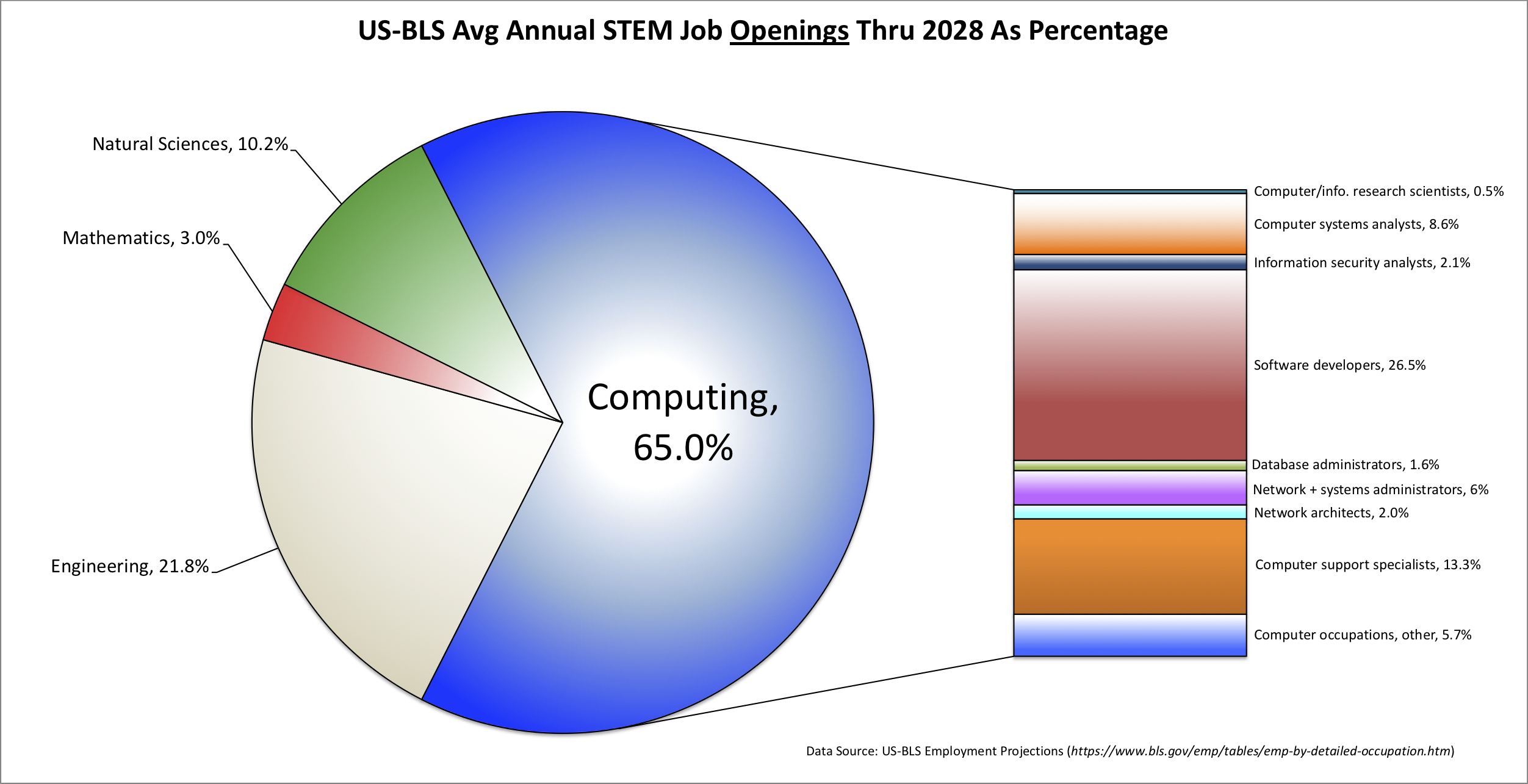

If you are visiting this page, then there is a good chance that you are a student interested in a career in science, technology, engineering, or mathematics (STEM). What is the job market going to be like when you graduate?
Predicting the future is always risky, but when it comes to forecasting the U.S. labor market, most people look to the U.S. Bureau of Labor Statistics (US-BLS). Every year, the US-BLS produces two sets of employment projections for the coming decade:
According to both of these US-BLS projections, computing will be the safest STEM career options for the foreseeable future. The following table presents two charts of these US-BLS projections for STEM careers through the year 2028 for side-by-side comparison. The left chart presents the US-BLS New Jobs projections and the right chart presents their Total Job Openings projections:

|

|
(Click on either chart for a larger image.)
As you can see from the chart on the left, the US government predicts that the top five STEM jobs in terms of growth will all be in computing.
In particular, the US-BLS predicts that each year, there will be nearly 30,000 new software development jobs, over 8,000 new computing support jobs, over 5,000 new systems analysts jobs, over 3,000 information security jobs, and over 4,000 other computing jobs. No other STEM career is expected to generate even 3000 new jobs per year.
The chart on the right paints a similar picture when retiree-replacements are considered: the top five STEM careers with the most job opportunities per year are: software development, computing support, systems analysts, network/systems administration, and other computer occupations.
If we aggregate these US-BLS projections to see the number of jobs per year in each STEM area, we get the following charts:

|

|
(Click on either chart for a larger image.)
If we take those numbers and represent them as percentages of all STEM job opportunities, we get the following two charts:

|

|
(Click on either chart for a larger image.)
For the foreseeable future of science, technology, engineering, and mathematics jobs in the US, more than 3 out of 5 of the job openings are going to be in computing! It is worth mentioning that this is not a fluke -- all of these numbers are fairly consistent with those from two, four, six, and eight years ago.
What kind of "computing" careers are these? The bar-chart to the right of each pie-chart breaks down the "computing" job openings into the different career categories, and shows the variety of careers that are available for students who study computing. As can be seen in the chart on the left, the US-BLS is predicting that over 49% of the New Jobs in STEM will be in software development (aka software engineering) alone, compared to less than 12% in the combined branches of traditional engineering! With respect to Total Job Openings, the chart on the right predicts that there will be more openings in software development/engineering than there will be in all the branches of traditional engineering combined.
Why will there be so many software development/engineering jobs? We see two main reasons:
Note that basic computer literacy (i.e., knowing how to use Microsoft Windows, Word, Excel, or Powerpoint) or CAD-design skills will not qualify you for one of these jobs. Most of these jobs require advanced computing skills that you will only gain by studying computer science and/or software engineering.
When you are trying to get a job, a major consideration is how much competition is there for the job? To provide some insight into this question, our final chart compares the US-BLS projections for Total Job Openings in the various STEM areas against the most recent (2017) National Science Foundation data for the number of bachelors degrees being awarded in those areas:
(Click on the chart for a larger image.)
As can readily be seen above:
In his 1993 book Outliers, Malcom Gladwell argued that anyone who practices a skill for 10,000 hours can master that skill. If that is true, then it follows that if (for example) you want to prepare yourself for one of those numerous careers in software development, your best strategy is to choose a college major that will give you lots of practice actually developing software.
More generally, the US-BLS projections predict that most of the STEM careers are going to be in computing. If you want to maximize your chances of success in one of these careers, choose a computing-related major that provides lots of hands-on practice in that area.
However, employers also place high value on communication, collegiality, being able to work in groups, and other "people" skills. To maximize your career opportunities, choose a college or university that will help you develop these skills. A liberal arts education is especially good at helping you develop these skills, specifically: critical thinking, writing, speaking, and giving presentations for non-technical audiences.
In the 21st century, computing technology (especially software) affects more and more of our day-to-day lives, and people are needed to create and maintain that technology.
If you want the best possible preparation for the vast majority of tomorrow's STEM careers, the smart move is to major in a computing-related discipline (computer science and/or software engineering) at a college or university that will also help you develop your "people" skills.
To prepare students for this century's careers, Calvin's Department of Computer Science offers:
If God has gifted you with creative, logical, and/or quantitative abilities, He may be calling you to a career in computing. We invite you to join us -- we will do everything we can to help you explore that calling and develop your gifts.